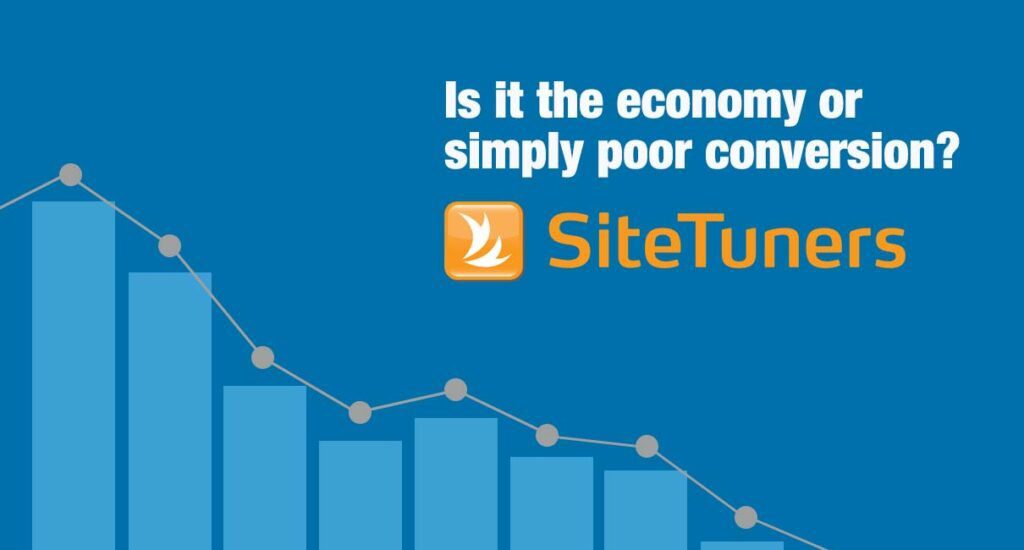One of the biggest challenges for conversion optimizers has always been getting higher-ups to fund a conversion optimization program.
The COVID-19 pandemic may have given companies some clarity on the importance of optimizing their digital channels. However, only a few businesses will actually follow through when it comes to the actual prioritization of website optimization projects. And these businesses will typically be those that are already enjoying some online success.
It’s an entirely different scenario in the majority of companies which have either just shifted to digital or suffered some losses. In these organizations, the focus for resources and efforts will likely remain on visitor acquisition:
- There will be little to no attention paid to converting online visitors.
- Higher-ups will opt to live with “good enough” website usability and user experience.
This doesn’t have to be your situation. There are some things you can control to make it more likely to get funding by your management for a conversion optimization program.
Getting Your Management to Fund a Conversion Optimization Program
Conversion optimization programs often get treated as a back-burner project by companies that need it most.
Most executives recognize the importance of conversion rate optimization (CRO) in their digital strategy. However, they often defer it until after they’ve sorted out the different aspects of search engine optimization, search engine marketing, or their social media strategy.
To digital marketers trained in CRO, this can lead to a quite a bit of frustration. Marketers worth their salt will recognize the leaky bucket. They know you can pour in all the water you want, but nobody’s getting anywhere until you get serious about plugging the holes. The issue is, it’s tough to communicate this problem to upper management:
- Optimization activities, such as testing, even when conducted with free tools, are far from free. The associated costs can rankle executives.
- CRO is typically even less understood by upper management than SEO. (And SEO is, on average, barely understood.)
Below are some tips on how you can persuade your decision-makers and stakeholders to fund your conversion rate optimization program in order to achieve your company’s growth and revenue goals:
1. Present the Optimization Project as an Investment
Let’s face it: CRO as an undertaking can be expensive. To be successful, you have to get the right tools and skill set. Depending on your company’s financial capacity, these can be seen as an unnecessary drain on resources.
To counter this perception, you need to be able to project the dollar value of the impact of your conversion rate optimization program. You have to show your leadership team that not prioritizing CRO comes with an opportunity cost. Sometimes, this can be as easy as checking how your conversion rate fares compared to the industry average. If your company suffers from lower conversion rates, then you can calculate the potential revenue increase for even a minor conversion lift. (Learn if your e-commerce conversion rate is good enough.)
A lot of times, however, you will have to dig deep into your analytics or even perform simple optimization projects to get the data you need to back your arguments.
The key here is to present conversion activities as a critical aspect of your online business. That is, CRO is more than testing; it’s about getting meaningful insights for optimizing your entire digital experience.
2. Have Someone “Own” the Optimization Cycle
The first thing this addresses is that CRO is something on someone’s project list. It’s not. It’s a cycle that needs to be constantly part of the digital marketing mix. Someone needs to own that process. A structured approach to CRO, along with having a clear stakeholder who leads the process, heightens the chance of success.
Back in 2016, Econsultancy conducted a survey with results indicating that 35% of the respondents had a structured approach to improving conversion rates. And over half of those companies saw a significant increase in sales from having a structured framework.
Fast forward close to half a decade later and the industry could still do better in this regard.
According to Decibel and Econsultancy’s “The State of Digital Experience and Conversion in 2020” report, 69% of the respondents either somewhat or strongly agree that they have a strategic and proactive approach to CRO, as opposed to a tactical and reactive one.
Grow Your Business Exponentially with Proven Conversion Rate Optimization Expertise. |
3. Do Your Analytics Homework
If you own the conversion rate optimization process, be sure to do your homework before pitching conversion projects.
Use your analytics tools to identify the leakiest parts of the bucket. Demonstrate that you have found the top areas that will benefit from conversion optimization. On your website, this could mean areas that receive a significant amount of traffic but have high bounce rates. (You can use Google Analytics hidden features to identify those pages that need to be fixed.)
Hunt for the webpages that are primed to benefit most from CRO. Then, build a few scenarios about the ROI when the needle moves even just a little. The math adds to the tedium, but it increases your chances of being heard.
4. Start Small
It might not be ideal to start your optimization pitch with areas like the homepage or other key sections of your website. You need a few wins under your belt before upper management trusts you with those pages.
Start smaller.
The right balance is that the pages are big enough to lead to a demonstrable win with dollars attached, but small enough that you can start your tests without needing too many approvals.
5. Show Your Bosses You’ve Thought this Through
When presenting your plan, you need to show your boss you’ve done the pre-work tasks.
Show them you’ve automated what can be automated to save time and money.
Display a readiness to tackle known elements by talking about the steps and your plan of action for the different stages. For instance, show that you’ve thought your testing action plan through, and talk about what the plan does to mitigate risks.
You’ll also need to understand whom you’ll need for your projects, which marketing and IT teams they are coming from, and what the potential concerns are.
Don’t Stop Persuading: Get Leadership to Fund Your CRO Program
The industry appears to be going in the right direction. Decibel and Econsultancy’s survey showed that 70% of the organizations consider website and app conversion optimization a top priority.
But it’s still a long battle.
Conversion rate optimization can take a while for some companies to get. There are huge opportunities, but some companies are more primed to recognize them than others.
If CRO is novel to the company you’re working for, you have a double-edged sword. Testing, for instance, may trigger giant red flags to the person responsible for the digital marketing budget, but there are clearly more wins to be had.
Be patient, educate, run the math for them until you have a small set of tests approved, and then go for the bigger wins.
This post was originally published in January 2013 and has been updated to reflect the state of conversion rate optimization in 2021.
Subscribe to the SiteTuners Weekly EmailGrow Your Business Exponentially with Proven Conversion Rate Optimization Expertise. |



